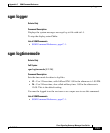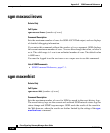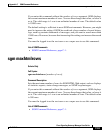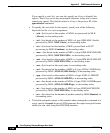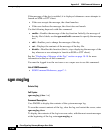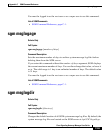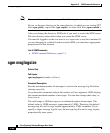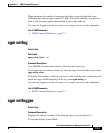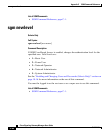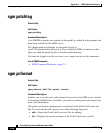
C-57
Cisco Signaling Gateway Manager User Guide
OL-5742-01
Appendix C SGM Command Reference
sgm motd
If you do not specify the quiet keyword (that is, if you view the output on
your terminal), SGM displays only instance-level statistics (as listed in the
description of the sort-option argument). To see the full set of trigger-level
statistics, you must use the SGM Web interface. See the “Viewing the MLR
Statistics Daily Reports” section on page 15-53 for more information.
Before entering this command, you must enable SGM to generate MLR
processed, aborts, continues, subtriggers, and triggers reports. See the description
of the sgm statreps [mlr | nomlr] command for more information.
The first time you use the sgm mlrstats command to generate a report, you must
enter the command at least twice:
• The first entry gets the first set of raw data.
• The second entry begins calculating useful accounting statistics and, if the
data being collected appears valid, begins generating the report.
Thereafter, you need only enter this command once to generate the report.
See the “Viewing the MLR Statistics Daily Reports” section on page 15-53 for
more information on MLR reports.
You must be logged in as the root user or as a super user to use this command.
List of SGM Commands
• SGM Command Reference, page C-1.
sgm motd
Solaris Only
Full Syntax
sgm motd [cat | disable | edit | enable]
Command Description
Manages the SGM message of the day file, which is a user-specified SGM system
notice. You can use the message of the day to inform users of important changes
or events in the SGM system. The message of the day also gives users an
opportunity to exit the SGM or GTT client before launching.





